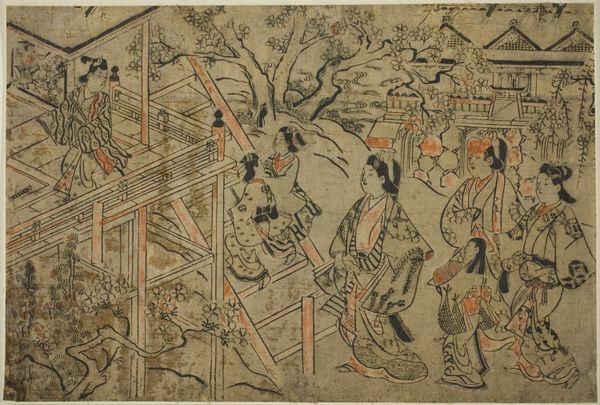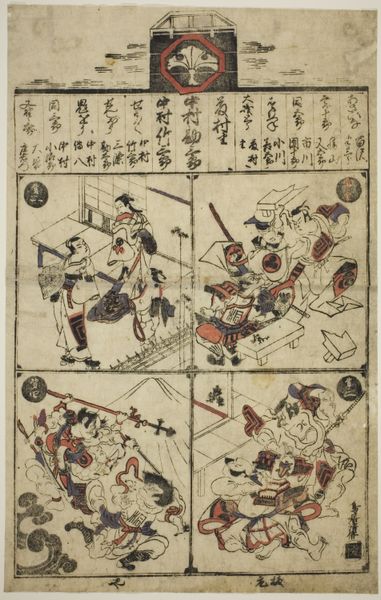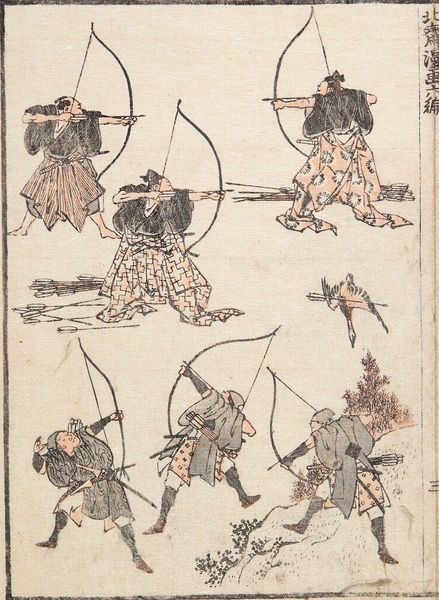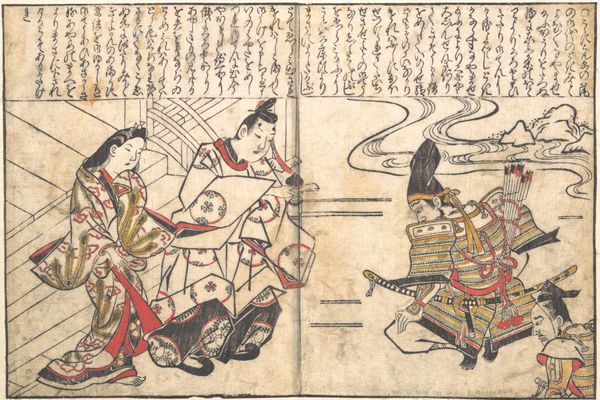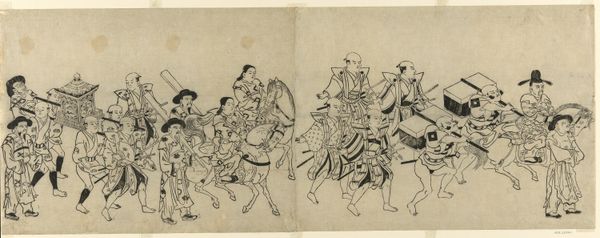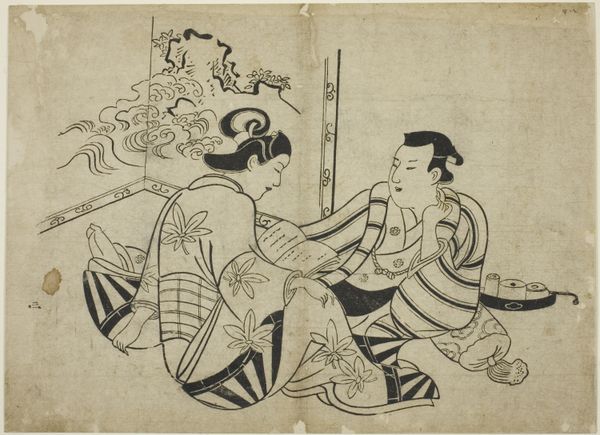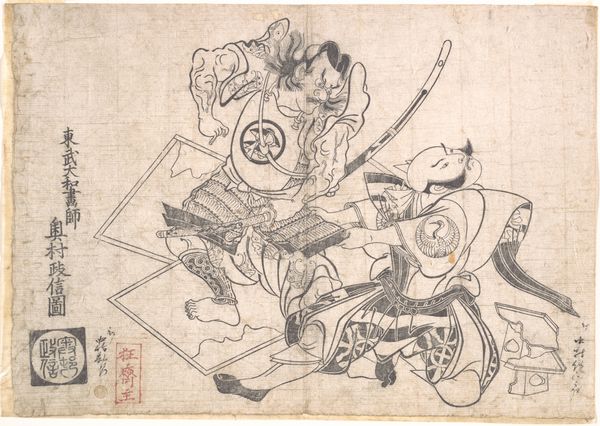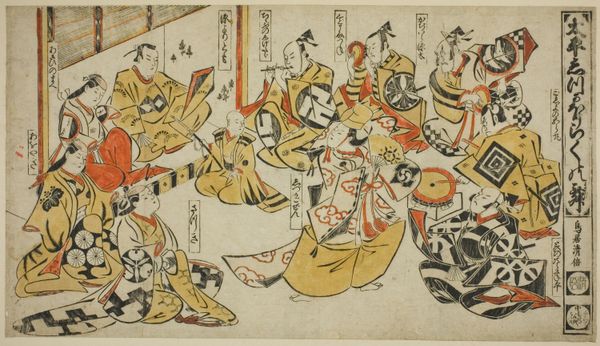
The Tengu King Training his Pupils c. 1690
0:00
0:00
drawing, print, paper, ink, woodblock-print
#
drawing
# print
#
pen sketch
#
asian-art
#
ukiyo-e
#
figuration
#
paper
#
ink
#
woodblock-print
#
history-painting
Dimensions: 21.1 × 32.7 cm
Copyright: Public Domain
Editor: We’re looking at "The Tengu King Training his Pupils," a print by Hishikawa Moronobu from around 1690, crafted with ink on paper as a woodblock print. I’m struck by the energy – it's almost cartoonish in its depiction of movement, like frames from an old animation! What do you see in this piece? Curator: Ah, Moronobu. This print just bursts with a manic energy, doesn't it? Like a fever dream in black ink. To me, this work embodies a whimsical spirit and yet is subtly hinting at the disciplined training, suggesting an alternate take on military vigor through a lively depiction. I can't help but consider the context, a Japan finding its own cultural identity in the Edo period. Does the linear exuberance communicate that cultural vigor, would you agree? Editor: That's fascinating – the discipline hiding beneath the chaos! It almost feels… irreverent? Like a playful jab at the established order, the artist taking mythical characters out of historical context. Curator: Exactly! And that irreverence, it's a wink, isn’t it? Imagine those wings fluttering behind them as they negotiate balancing along that staff; not very serious warriors in that light! Also consider woodblock prints during this time, this art democratizing stories, taking it to the people through multiples. It’s like street art meets mythology. Don’t you think so? Editor: I didn't consider the rebellious aspect from the printing medium. Seeing it as this intersection is really exciting. So it's more than just mythical figures running around – it's social commentary disguised as a cartoon. Curator: Perhaps the magic and myth allows that social voice even further expression through symbolism. We see an embrace of native myth in this chaos, where this work speaks more deeply about social dynamism than simple aesthetics! I'd not looked so keenly until your fresh take offered it. Thanks!
Comments
No comments
Be the first to comment and join the conversation on the ultimate creative platform.
